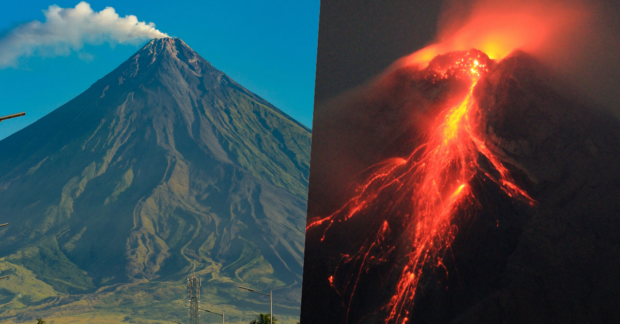
The Mayon volcano, known for its breathtaking beauty and occasional fiery temperament, has recently alerted residents and authorities as it continues exhibiting signs of unrest. (CONTRIBUTED PHOTOS/Jay Carolino and Arren Christian Ventura)
MANILA, Philippines — The Philippine Institute of Volcanology and Seismology (Phivolcs) on Friday said it recorded the largest pyroclastic density current (PDC) registered since June 8 on Thursday night.
According to Phivolcs in its latest advisory, the PDC occurred at 11:18 p.m. on Thursday and is the largest seen since June 8.
It was also among the 13 PDCs recorded from Thursday to Friday, which is higher than the three PDCs recorded from Wednesday to Thursday.
“In the past 24-hour period, very slow effusion of lava from the summit crater of Mayon Volcano continued to feed lava flows and collapse debris on the Mi-isi (south) and Bonga (southeastern) gullies,” said Phivolcs.
“Traces of ashfall dispersed from the PDCs were reported in Sitio Buga, Brgy. Nabonton, City of Ligao and Purok 7, Brgy. San Francisco, Municipality of Guinobatan,” it added.
Meanwhile, 307 rockfall events and four volcanic earthquakes were also recorded in the same period.
Both are slightly higher than the recorded numbers from Wednesday to Thursday where 306 rockfall events and two volcanic tremors occurred.
Apart from these, Phivolcs also recorded steam-laden plumes that rose 750 meters, as well as an average sulfur dioxide emission of 826 tonnes.
Ash fall events are then forecast to likely occur on the south side of the volcano, based on the prevailing wind pattern.
Currently, Alert Level 3 remains, which means “it is currently in a relatively high level of unrest as magma is at the crater and hazardous eruption within weeks or even days is possible.”
As a result, all residents within the six-kilometer radius of the permanent danger zone should be evacuated due to the effects of PDCs, lava flows, rockfalls and other volcanic hazards.
Civil aviation authorities were also advised to prohibit pilots from flying close to the volcano’s summit as ash from any sudden eruption can be hazardous to aircraft.

